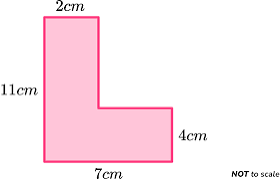
Welcome to our blog on compound shapes! In geometry, compound shapes are made up of two or more simple shapes combined together. These shapes may include rectangles, triangles, circles, and more.
Compound shapes are often used in real-world situations, such as when determining the area of a swimming pool or the perimeter of a garden. By breaking down a complex shape into simpler components, we can easily calculate its measurements and make accurate estimates.
One common example of a compound shape is a trapezoid on top of a rectangle. To find the area of this shape, we would calculate the area of the trapezoid (1/2 x height x (base1 + base2)) and the area of the rectangle (length x width), then add the two together.
Another example is a composite figure made up of a rectangle and a semicircle. We can calculate the area of the rectangle (length x width) and the area of the semicircle (1/2 x π x radius^2), then sum them to find the total area of the composite shape.
Compound shapes can also be three-dimensional, such as a prism with a cylinder on top. To find the volume of this shape, we would calculate the volume of the prism (base area x height) and the volume of the cylinder (π x radius^2 x height), then add the two together.
Understanding compound shapes and how to calculate their measurements is essential for solving geometry problems and practical applications. Stay tuned for more tips and tricks on working with compound shapes in our upcoming posts!
0 comments
Be the first to comment!
This post is waiting for your feedback.
Share your thoughts and join the conversation.
